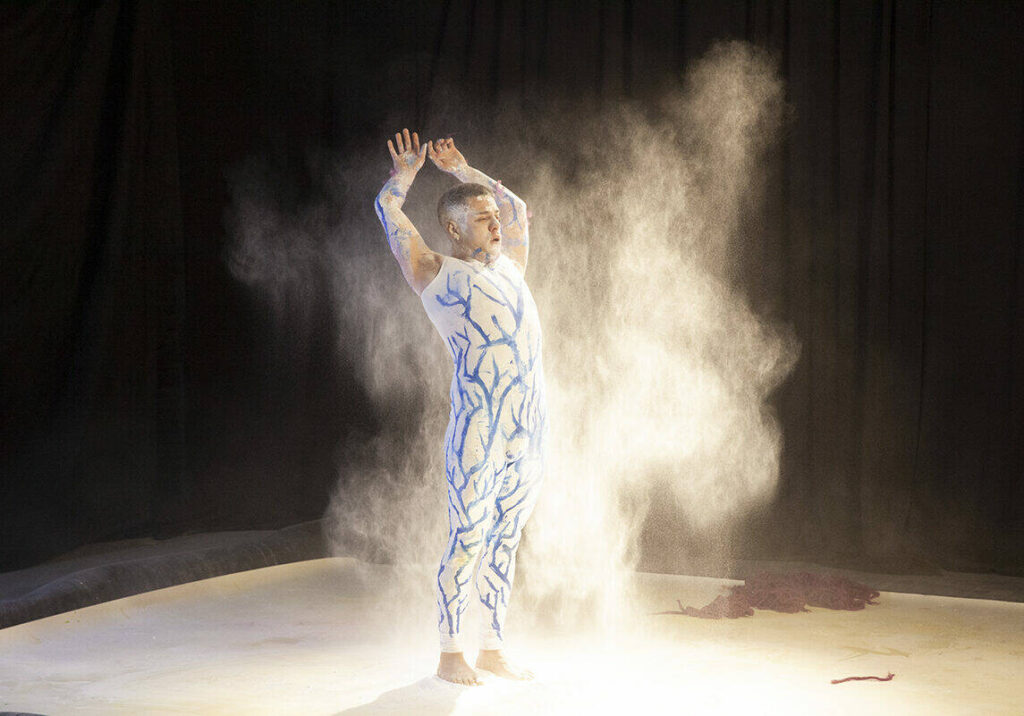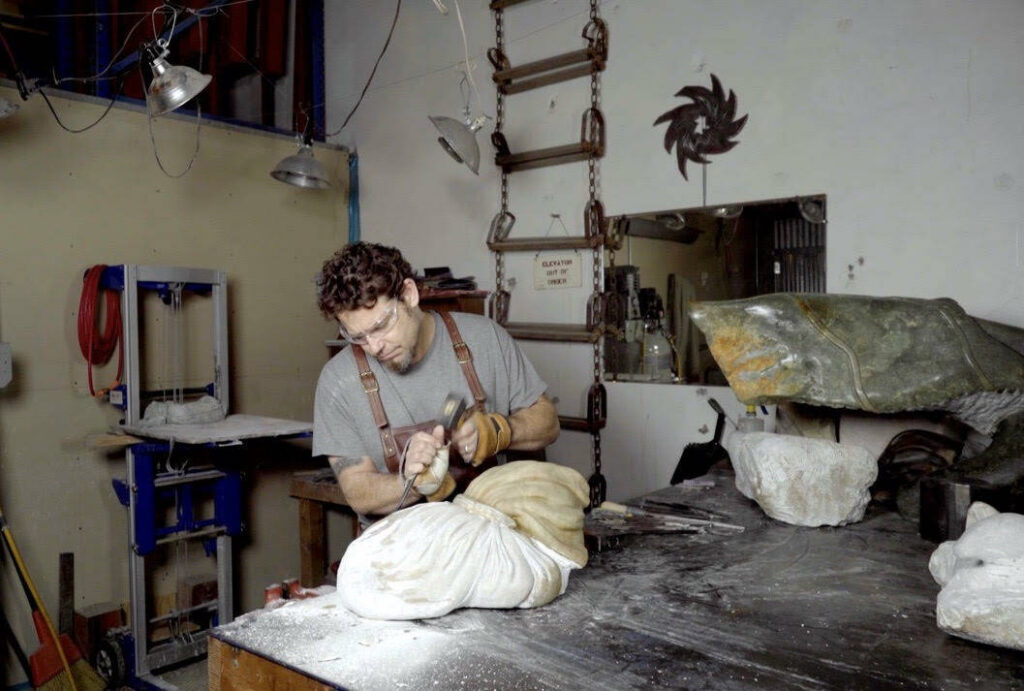24th S.F. IndieFest premieres powerful new documentary on art and addiction and films of all flavors
Adriana Marchione’s “The Creative High” focuses on nine mostly Bay Area artists
By James Ambroff-Tahan • February 1, 2022 | Link to the article on sfexaminer.com
The San Francisco Independent Film Festival is back for the 24th time Feb. 3-13, with in-theater screenings at the Roxie Theater and online streaming of 26 features and 42 shorts from 10 countries. Included among them is one sobering documentary, “The Creative High,” which focuses on nine mostly Bay Area performing and visual artists whose talents help liberate them from addiction to drugs or alcohol — and find their identities.

The nine artists spotlighted in the film, making its world premiere 7 p.m. Feb. 6 at the Roxie, are a potpourri of creativity: choreographer and performance artist Luis Canales; expressive artist and educator Lessa Clark; hip hop musician Brandon Michael Randle; underground punk musician Ralph Spight; photographer and theater producer Joan Osato; theater artist and drag performer Peter Griggs; visual artist Kathy Page; rock guitarist Wes Geer; and musician and sculptor Jason Bernhardt.
The nine artists’ addiction to alcohol and drugs and the power of creativity to wean them from their affliction is an experience familiar to the film’s director, Adriana Marchione, as she is in her 28th year of recovery from alcoholism and found that her work in photography and mixed media proved useful as a therapy. Her recovery and career as an expressive art therapist became the inspiration for “The Creative High” as well as a vehicle for casting the film.
“Some of them were people I knew through my recovery network in the Bay Area, like Jason, Ralph and Kathy. I knew they would have a good story and also have a lot of integrity in their creative practices,” Marchione said. “Some of them I found through random means, like Wes, who came to me through Facebook because someone pointed him out, or Brandon, who I found through someone on the street who was part of hip hop and pointed me to him.”
The film begins vividly with Canales, whose dance routines include an improvisational performance in which his body becomes a canvas for painter Uel Renteria, and another striking performance in which he adorns himself with hypodermic needles to take charge of his former addiction while disclosing it for all to see.
“My intention was to put the drug paraphernalia on my body; it became my body just as it became who I was,” Canales said. “It was part of my skin because my biochemistry had been chronically altered from the inside out, bubbling up to the surface like methamphetamine-laced acne. Drugs became who I was psychologically, neuro-chemically, kinesthetically, morally and as depicted as a visual in my performance art, it also became who I was dermatologically.”
Dance and movement, Canales said, helps him process trauma psychologically, but that process plays out as a kinetically aesthetic act.
“Dancing with mental and emotional intention physically repairs your brain and thus helps redirect you in a psychologically healthier direction,” Canales said. “This is the effect of performance art. It induces an interpersonal, neurobiological effect on both the artist performing and the audience witnessing it — an act that literally creates a neurological change simultaneously.”
A common theme for many of the artists profiled in the film is that they hit rock bottom during their addiction before lifting themselves via their craft into recovery. The depths of addiction often come with humiliation, an experience that is heart-wrenchingly shared by Clark, who eschewed alcoholism and work as a stripper to become an artist and hula hoop dancer.
“I quit the adult clubs because I knew they weren’t right for me, and when I became old enough to drink I found myself drunk every shift,” Clark said. “A couple years after I quit the clubs, I began doing personal growth work and discovered a passion for dance that didn’t involve me removing articles of clothes or craving substances.”
Another common aspect of addiction is that it debases a person’s perception of his or her self-worth and abilities, an experience that Page knows very well.
“It took me considerable time to recover from addiction, but in the process, I began to see how fear and self-doubt ruled my life,” Page said. “With time and continued recovery, I realized that I was safe, that I didn’t need to be in complete control at all times, I could trust the universe and take risks. That’s about the time I allowed myself to take my first art class. That was 20 years ago. I’m still doing new things, taking risks, exploring new territory, learning new things.”
For some artists, such as Spight, who has been a fixture of the Bay Area’s underground punk scene for decades, addiction has been a nagging problem through much of their career.
“I was creating, performing, touring and recording when I was drinking as well — it’s just that I was miserable doing it,” Spight said. “There’s always this subtle idea that the addict is irresponsible, when that may be the last thing they are, and really goes to stereotypes about artists that we continue to perpetuate in society.”
Another musician, Geer, has amplified his own recovery from addiction into Rock to Recovery, a therapeutic music program he developed to help non-musicians escape addiction.
“People were coming in with suicidal ideas, or physically ill from heroin withdrawals, even processing the recent death of a friend who OD’d,” Geer said. “And I would witness them transcend into joy, hope, even laughing and dancing. These people were having transformations that no drug could provide.”
Griggs is very familiar with transformative experiences, even on a daily basis, through his craft as a drag performer.
“Drag for me is sometimes taking what is troubling or inspiring to me on my inside and wearing it on the outside,” Griggs said. “I dress for the occasion — to carry the story of ‘what it is’ I’m attempting to share or express.”
However, the reality of Griggs’ recovery from addiction is a fixed, ongoing experience for him.

“As far as overcoming the disease of addiction, I don’t think it’s possible,” Griggs said. “However, accepting the terminal aspect of my affliction helps me carry on. Creativity is a spiritual outlet and part of what helps me grow in my lifelong journey of recovery.”
Perhaps the most obvious experience common to artists who have overcome an addiction is that the sustained high provided by their creativity has supplanted the fleeting high that alcohol or drugs provided. Bernhardt, whose stone sculptures were recently part of the de Young Museum’s “de Young Open” community art exhibition, is a prime example.
“Having a finished sculpture to look at and touch gives me a sense of real pride and accomplishment, not fantasy or delusional self-worth,” Bernhardt said. “After being chosen to display at the de Young Museum, sometimes I think, ‘I should stop here because I can’t beat that.’ But sculpting brings out the passion in me, gives me too much satisfaction to quit. I still get high doing it. And, of course, I live for the high!”